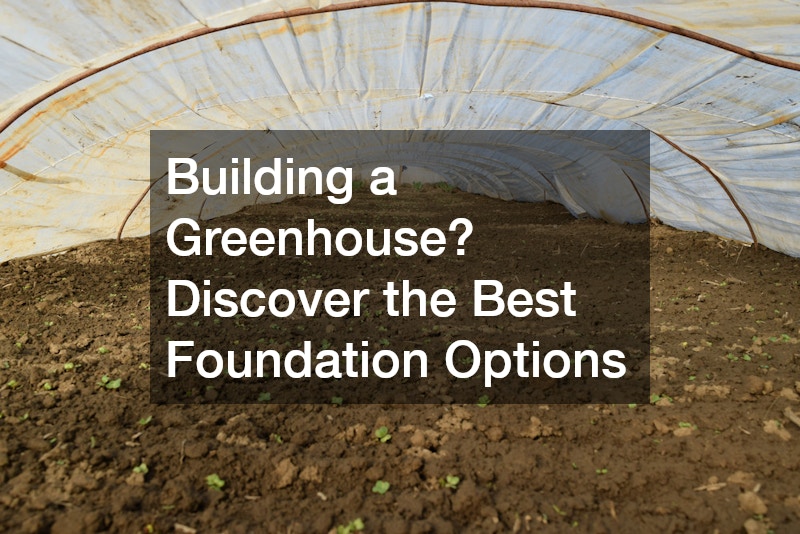Planning to build a greenhouse? One of the most critical aspects to consider is the foundation. The right foundation can ensure the stability, longevity, and overall success of your greenhouse. Here are five popular greenhouse foundation options, each with its own set of pros and cons, to help you make an informed decision.
No Foundation
The simplest option is to have no foundation at all. By pounding rebar or metal fence conduit into the ground, you can create a basic hoop structure.
This method is cost-effective and mobile, allowing you to move your greenhouse as needed. However, it’s not the sturdiest or most long-term solution and offers limited support for attaching plastic coverings.
Baseboards with Stakes
Using baseboards with stakes involves attaching 2×6 cedar baseboards to 2×2 cedar stakes driven into the ground. This method is also simple and inexpensive. It can last a long time if you use durable materials like cedar. However, it may not be the most structurally sound option and is best suited for lightweight structures like metal hoops or PVC frames.
4×4 Anchors
For a more robust foundation, consider using 4×4 anchors. This involves creating four-by-fours from two-by-four pines and placing them into the ground to form a sidewall. This method offers more design flexibility, allowing you to frame out various structures. It’s relatively cost-effective but requires digging holes and may not last as long as metal or concrete foundations.
Post Anchors with Deck Plates
A favorite among greenhouse builders, the post anchor and deck plate foundation uses metal anchors driven into the ground to support 4×4 posts. This method is durable, customizable, and excellent for leveling structures on uneven ground. However, installation can be labor-intensive and costly, especially given the rising prices of metal products.
Concrete Foundations
Concrete foundations are the most durable and long-lasting option. Used for heavy-duty structures, concrete handles moisture well and provides a stable base for many years. While cost-effective in the long run, this method requires skill and labor to pour and set properly. Once poured, concrete foundations are permanent, so careful planning is essential.
In conclusion, each foundation type has its benefits and drawbacks. Your choice will depend on your specific needs, budget, and long-term plans for your greenhouse. Whether you prefer the simplicity of a no-foundation setup or the durability of concrete, selecting the right foundation is a crucial step for successful greenhouse building.
.


